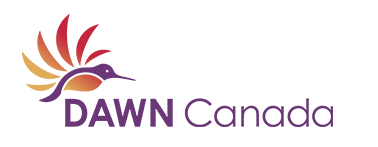How We Remember
Who and how we remember matters on Remembrance Day
We take time every Remembrance Day and have since I was a little kid to remember. It was my grandfather, Bertram Brayton, who was awarded the Victoria Cross when I was a child. It has been my father, Frank Brayton since he died and was buried at Soldier’s Field as well, just over 20 years ago, here in Montreal. I believed and still do, that they put on those uniforms for us and for our freedom, our rights.
But in the last few years, it has bothered me more and more that we do not have a day in Canada where we honour the other freedom and rights defenders who have made the ultimate sacrifice, because they do not wear the uniform.
Our past President, Carmela Hutchison was also a proud Veteran, as is her husband and widow, Bob Hutchison. Carmela lived to serve others and did so faithfully when she was a nurse in the military. But it was as our President, as the President of the National Network for Mental Health, the Alberta Network for Mental Health, a member of local the Handy Bus Committee, the Council of Canadians with Disabilities, the Emergency Preparedness Planning Committee of the town of Airdrie, Alberta, to name a few of the places she gave her time. Carmela served with a commitment to human rights for all of us and she gave until she could give no more and made the ultimate sacrifice and died too young, so today we remember her too.
We finally have a National Day for Truth & Reconciliation in Canada and this year happily; much great prominence was given to National Indigenous Veteran’s Day. The beaded poppies being made by Indigenous artisans are a beautiful and lasting tribute to every soul they remember.
One of our favourite young feminist leaders, Megan Linton published an article about the source of the poppies being sold by the millions and millions across Canada to support our Veterans. It was last week and it’s been on my mind ever since.
This year for the first time in my life I did not seek out a store where I could purchase a few of these ‘official’ poppies. These poppies are being made at the hands of the incarcerated who receive only pennies at best for each one. The incarcerated are prisoners and people with disabilities. A closer look at Megan’s article reveals a long and dark history for the poppy in supporting ableist notions of productivity for the disabled (veterans and people labeled with intellectual disabilities subsequently) and colonial systems of oppression, devaluation and incarceration of black and brown people.
A cheerful article in the Financial Post describes the success of the supply chain that includes sweeping and negative generalizations about prisoners using the poppies for nefarious purposes while condoning the use of forced labour to produce them for pennies a poppy.
Can we instead imagine a reconciled Remembrance Day that would stop making this only about Veterans, and include remembering those who sacrificed and dedicated their lives to protecting our human rights? Can we stop supporting a plastic, environmentally unfriendly, symbol of oppression? Instead, can we look to our Indigenous community where each poppy is made with care and honour to Indigenous and non-Indigenous veterans and brings honour to the work of hands who make them too.
IMAGE DESCRIPTION: November is Indigenous Disability Awareness Month in Canada #IDAM2021 DAWN Canada logo with their purple hummingbird with auburn yellow-red belly and wings. British Columbia Aboriginal Network on Disability Society (BCANDS) logo with Indigenous art work in gold.
